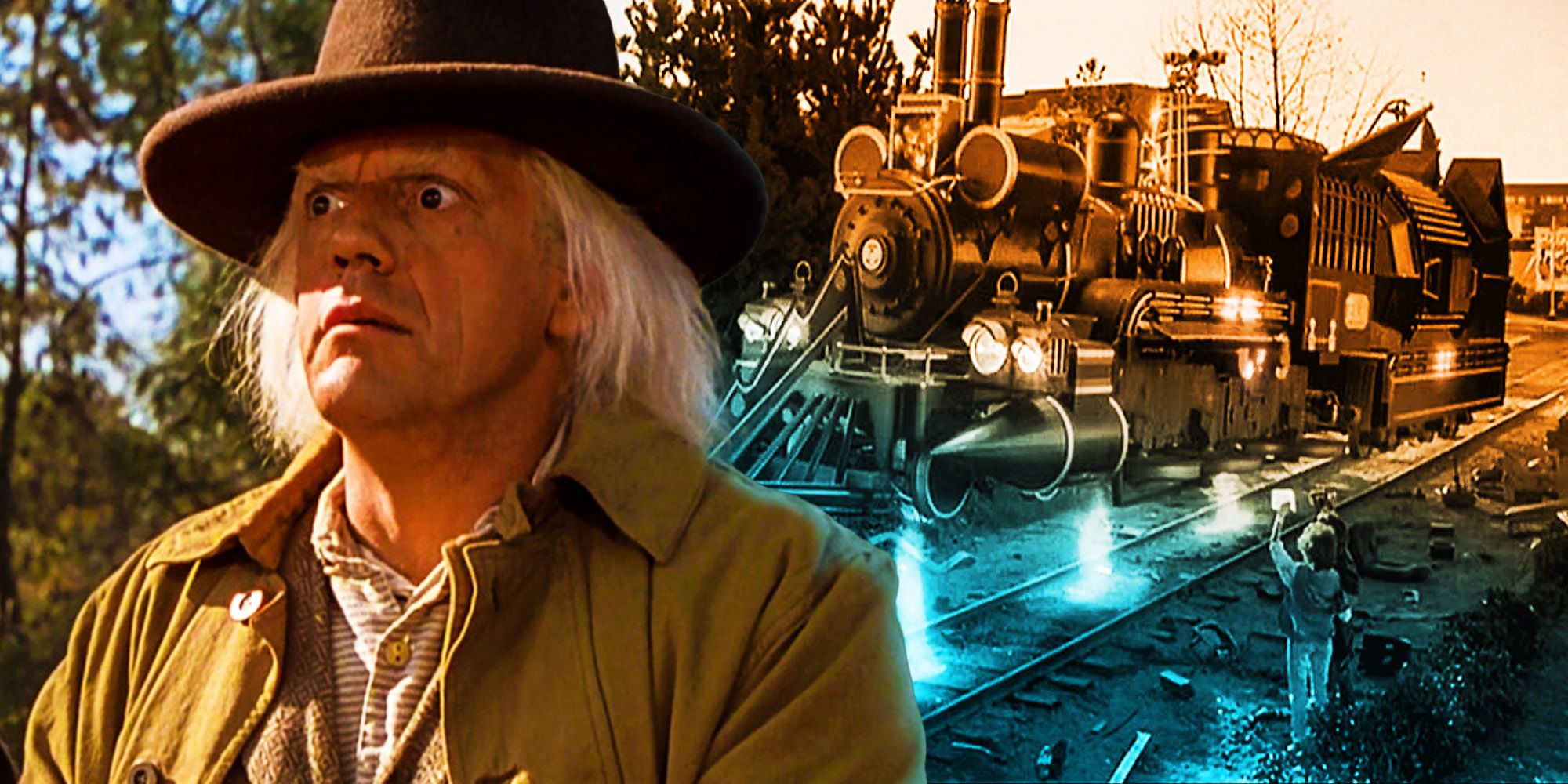In Back to the Future Part III, Marty McFly (Michael J. Fox) travels to September 2, 1885, to save Doc Emmett Brown (Christopher Lloyd), who is purportedly killed by Biff Tannen’s (Thomas F. Wilson) great-grandfather. After the DeLorean is unable to reach 88mph for it to be able to travel back in time, Doc devises a plan to use a steam locomotive to push the DeLorean up to the requisite speed. During this endeavor, Doc encounters Clara Clayton (Mary Steenburgen), who is later seen accompanying him in the train time machine towards the end of the film.
Longtime fans of the franchise have posed a crucial question at this juncture: how was Doc Brown able to create a flying steam locomotive equipped with a flux capacitor without the necessary components required for it to function? As electrical components had not been invented until 1947, Doc’s ability to create a train time machine creates a probable plot hole-of-sorts when viewed from a practical standpoint. Apart from it being a plot contrivance, a possible answer to the question has been offered by IDW comics, namely Back to the Future: Tales from the Time Train.
Click the button below to start this article in quick view.
As per the comics, Doc Brown was able to put together a functioning steam locomotive by using the components of the hoverboard from 2015, granting him access to technological inventions in the future. This, in conjunction with Doc’s extensive knowledge about science and metallurgy, allowed him to create a frictionless dynamo that was able to store multiples of the 1.21 jigowatts required for time travel. If one traces the chronology of the events that occur in Back to the Future Part III, it becomes apparent that the time train took approximately ten years to be built, namely between 1885 to 1895. After the time train was able to pass its first temporal displacement test, Doc Brown, Clara, and his two sons traveled to 2015 and beyond in order to grant it a hover conversion.
Moreover, unlike the Delorean, the time train sported symmetrical external components on both sides, possibly representing a more nuanced grasp of time travel technology and mechanics on Doc’s part. It is also interesting to note that before Doc meets up with Marty and Jennifer on October 27, 1985, the time train triggers the bells and gates of the nearby railroad even before its arrival. This might be attributed to the possibility that the time train is able to trigger a phantom effect even before being connected to its destination through space-time, which can be deemed as a testimony for Doc’s inventive genius.
The Back to the Future franchise comics also points towards the fact that the Brown family had attempted to travel to 1985 on June 12, 1893, but had failed as the train had crashed after failing to achieve temporal displacement. Doc was able to fashion a functional machine after witnessing a steam tricycle driver on a Serpollet, which provided him with the idea of using it as a time machine. Hence, despite juggling convoluted timelines and disparate pieces of technology over numerous time periods, Doc Brown was able to create a fully-functional steam locomotive, as witnessed at the end of Back to the Future Part III.
About The Author

